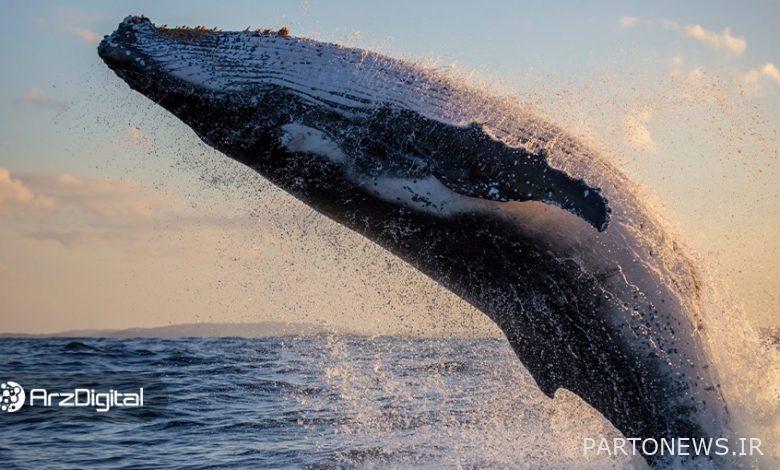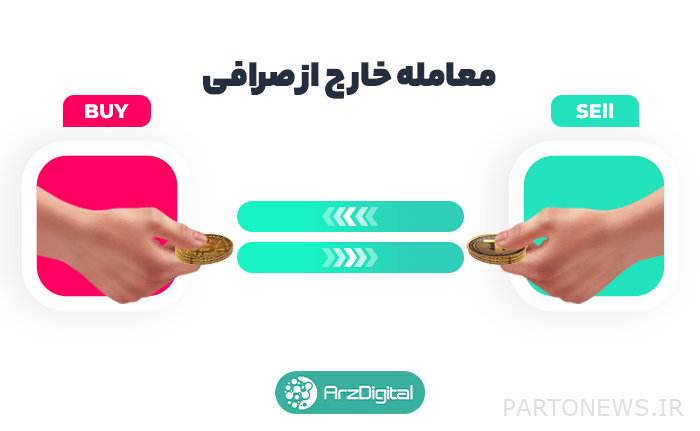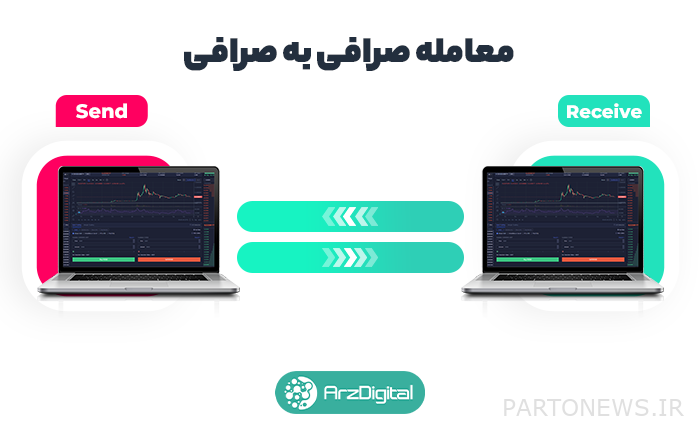Who is the Bitcoin Whale and how does it trade?

The term bitcoin whale or bitcoin whale is applied to those who hold large amounts of bitcoins. 6% of all available bitcoins are stored in only 10 bitcoin wallets and are available to whales in this market. When whales buy, sell, or even move a digital currency, they can easily create a new wave in the market.
If you follow the news about digital currencies, you must have encountered news such as the investment of large companies or celebrities in bitcoin and the increase in the price of bitcoin following this event; Or conversely, you have heard that the price of bitcoin has plummeted following the sales made by these individuals or companies.
These individuals and companies that own large volumes of bitcoin and influence the price of this digital currency by their actions are bitcoin whales. In this article, help an article From the Decript website, we will learn more about bitcoin whales and take a closer look at how they work and trade.
What does Bitcoin Whale Mean?
At the theoretical level, digital assets are helping to create a level playing field for all; But what happens in reality and cannot be denied is that even in distributed networks such as Bitcoin, some individuals and entities have more influence than others. These influential individuals and entities are the same as whales.
Bitcoin whales are individuals or entities that have enough bitcoins to influence or even manipulate the price of bitcoins. The greater the price fluctuations due to the behavior of a whale in the market, the more powerful and influential the whale is.
Based on website data Bit InfoCharts, 6% of all circulating bitcoins with a value of approximately $ 50 billion, are in the 10 largest bitcoin wallets and are managed by their owners. The top 100 bitcoin wallets hold about 15 percent of all bitcoins ($ 124 billion).
To fully understand how and why Bitcoin prices change, it is important to know who these whales are and how they work in our world today.
Who is the Bitcoin Whale?
The nature of bitcoin addresses and their specific design can greatly obscure the identities and profiles of bitcoin network users. Therefore, reverse engineering and identifying effective Bitcoin wallets is not an easy task.
However, this is not impossible. For this reason, and based on the many studies that have been done by various sources on the identity and activity of whales, bitcoin whales can be divided into four general groups:
exchange offices
Over the years, digital currency exchanges have steadily increased their bitcoin stocks, making them one of the largest concentrated owners of bitcoins. They do this to increase their liquidity and increase the number of transactions.
Site Analysis Token Analyst In 2019, it showed that about 6.7% of bitcoins in circulation are held in wallets owned by exchange offices. As proof of this estimate, four of the six major Bitcoin wallets belong to the Bitfinex, Binance, and OKEx exchanges.
Institutions
Institutions known as the Bitcoin market whales are either for-profit companies or they operate as fund management funds on behalf of reputable investors.
One of the largest holders of Bitcoin, the Digital Asset Management Company Gary Skill, From the company’s subsidiaries Digital Carnage Group (DCG). The company controls $ 29 billion in bitcoins. This amount is equivalent to more than 3% of the current market value.
Currently, the Grayscale Bitcoin Trust is the largest bitcoin fund in the world with 654,600 bitcoins.
People

Many of the famous rich people who got rich by investing in Bitcoin are the ones who recognized Bitcoin at the beginning of its launch and invested some money in it; At the same time, the value of bitcoin was much, much lower than it is today, and few people in the world had heard of it.
Cameron and Tyler Winklowas, co-founders of the Gemini Digital Currency Exchange, are said to have invested $ 11 million in Bitcoin in 2013. Bitcoin was trading at $ 141 at the time. With a simple account and book, we find that they bought about 78,000 bitcoins with this amount. Today, these 78,000 bitcoins are worth $ 3.5 billion.
Veteran American investor Tim Draper bought 29,656 bitcoins when the price of each bitcoin was $ 632 at an auction held by the FBI over the seized Silk Road bitcoins. He now has a fortune of more than $ 1 billion.
Barry Silbert, co-founder and CEO of Digital Currency Group (DCG), participated in the same auction and bought 48,000 bitcoins worth $ 2 billion today.
Satoshi Nakamoto
Satoshi Nakamoto, the anonymous creator of Bitcoin, deserves a separate section in this article from other individuals and entities. Leading digital currency researcher Sergio Demian Lerner estimates that Nakamoto may have mined more than 1 million bitcoins between January and July 2009.
Although there is currently no wallet with 1 million bitcoins, according to Lerner’s research, we can see that at least 1.8 million bitcoins were generated in the early days of networking, and 63% of that amount was never spent. Is. If Nakamoto really owns all of these bitcoins, then his current fortune would be more than $ 40 billion.
However, not all whales are known, and most are as unknown as Satoshi. What we do know about them is that 64 of the top 100 addresses have not yet withdrawn or transferred any bitcoins. One of them is Bainance cold wallet with 288,126 bitcoins (equivalent to 13 billion dollars).
When Bitcoin whales make noise!

Now we want to look at what happens when a whale trades.
We said that whales have a lot of bitcoin at their disposal, and that gives them the power to influence the market. Large buy or sell orders placed by each of these whales can have a dramatic effect on the market.
Companies are also always careful not to raise prices in the market when making large purchases; Because they still intend to buy, and the large orders they place will increase their prices and losses.
for example, Microstrategy Consider; The company owns 105,000 bitcoins ($ 4.7 billion). According to Michael Silver, CEO of the company, Microstrategy has used the “macro buying strategy” to buy nearly 20,000 bitcoins, but in thousands of smaller transactions.
According to Silver, to make a purchase, the company “traded 74 hours continuously and made 88,617 trades.” Using this strategy, the company was ready to buy between $ 30 and $ 50 million worth of assets in a matter of seconds during those 74 hours as soon as the Bitcoin price fell by 1 to 2 percent.
While bulk orders can drive up prices quickly, bulk orders can do the opposite; That is, reduce the price quickly. If traders try to convert their bitcoins into cash or other currencies, the simultaneous decrease in liquidity with the increase in trading volume can put pressure on the market to form a downward slope and lower the price of bitcoin.
Small investors are frightened to see these orders and prices fall and start selling their assets. Eventually, all of this will help the market to experience a significant price drop.
How exactly do bitcoin whales trade?
Whales can use several methods to trade; Each method offers a different approach to market conditions. In the following, you will study the different types of these methods.
Off-exchange transaction (OTC)

OTC (Abbreviation for Over The Counter) means a transaction outside an exchange or brokerage and completely outside the normal trading structure in a market. Off-exchange trading is a bilateral contract in which the buyer and seller agree on how to settle and trade without any intermediaries.
Investment banks also commonly use OTC transactions. They use this method for high volume transactions and communicate directly with their customers.
Several centralized exchanges, including Huobi and Bainance, provide OTC options to connect buyers and sellers who make high-value transactions. Customers are able to adjust their preferences to items such as price and volume.
However, these transactions are inherently private and participants in OTC transactions are required to comply with “Non-disclosure agreements” be.
Transfer wallet to wallet

OTC transactions between whales usually take place between their wallets. Because OTC transactions are conducted in a completely private manner and do not require the liquidity of exchanges, their effects on market prices are generally not significant.
Wallet-to-wallet transactions are usually not given much attention; Unless systems like Whale Alert Announce them publicly. They generally have little effect on prices in the short run; Because the reason for the transfer of funds in them is often not very clear.
Wallet transaction to an exchange office

Given the considerable liquidity that digital currency exchanges provide in the marketplace, the transfer of bitcoins from wallets to exchanges (or inbound assets) is a fundamental part of the digital currency market. Transfers from a whale wallet to an exchange are usually intentional Sales Or Transaction Accompanied.
In-chain data analytics companies such as گلسنود (Glassnode) monitors wallet movements containing at least 1,000 bitcoins. Depositing hundreds of millions of dollars in bitcoins from a wallet to an exchange office, although not very common, can scare many traders if it happens, create unwanted selling pressure and, as a result, negatively affect the price of bitcoin. Or cause a temporary reduction.
Exchange transaction to wallet

Because wallets can provide more security for digital assets, some whales store their assets in cold wallets and hardware devices that are not connected to the Internet.
Withdrawal of bitcoins from the exchange and depositing them in cold wallets can lead to price increases; Because of this, a lot of bitcoins go out of circulation and as a result, the demand increases.
But it is noteworthy that if a large number of stable coins are transferred from the exchange to the wallet, it indicates that the whales find the market conditions unfavorable or unstable and prefer to use a more reliable alternative in the short term.
Exchange to exchange transaction

When whales make transactions on an exchange-to-exchange basis, it is often for the purpose of arbitrage; That is, they intend to use small price differences in different exchanges to make a profit.
Minor changes in the price of bitcoin usually do not motivate day traders; But because whales have a much higher volume of digital currency, they can make a significant profit this way.
Concluding remarks
As a final point of the article, it is worth noting that due to the out-of-control nature of the digital currency market, whales can use large buy or sell orders to influence users’ emotions. For example, they can create large, unrealistic sales orders to artificially keep prices low, or temporarily raise prices by creating large purchase orders in the market.
However, the era of whales’ influence and power in the market will soon be over. Although sporadic price fluctuations or short-term market movements due to whale activity may continue, the whales’ long-term impact will be diminished as the acceptance and maturation of digital currencies in the global market increases, as well as with bitcoin prices.

